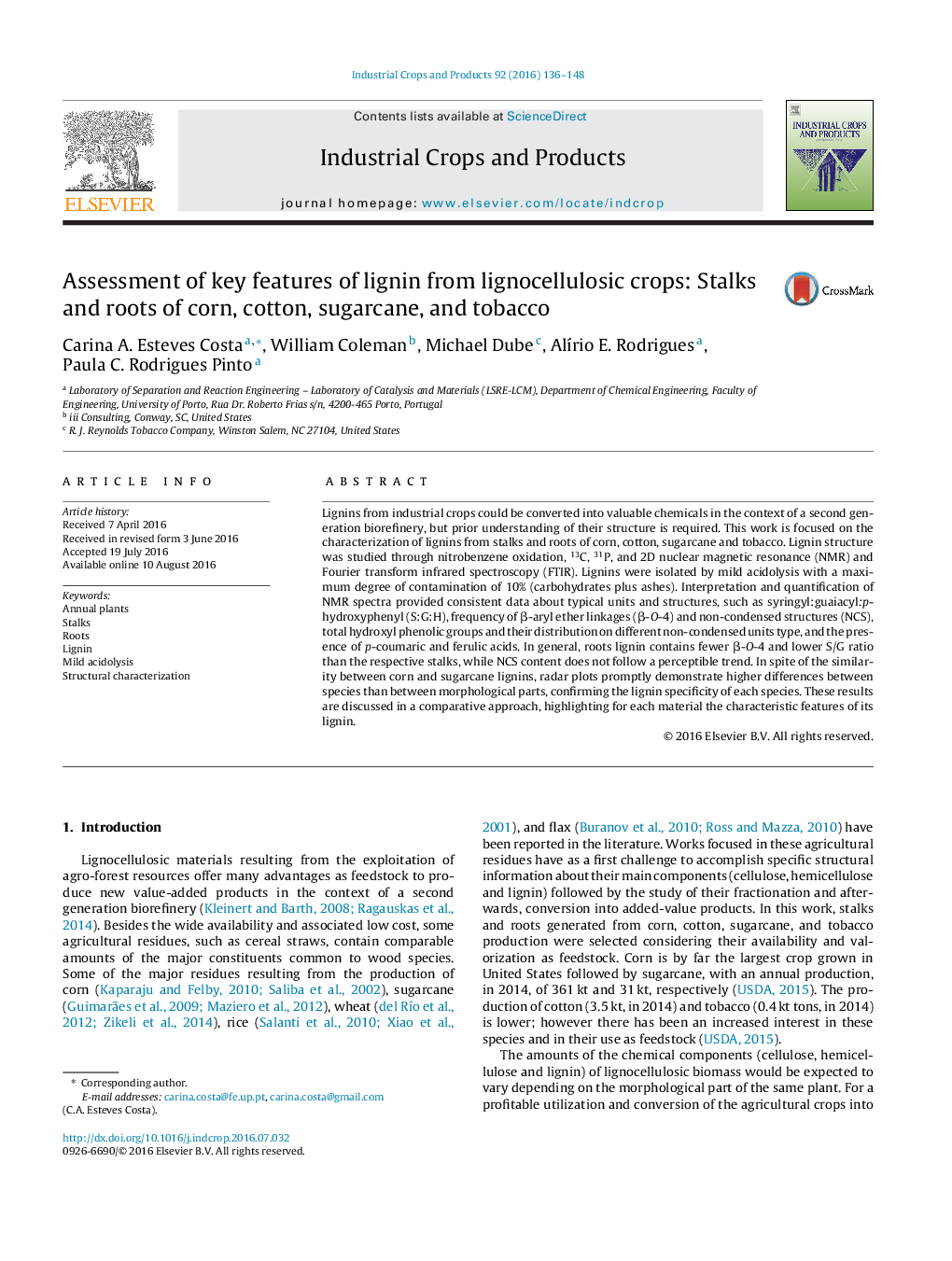| Article ID | Journal | Published Year | Pages | File Type |
|---|---|---|---|---|
| 4512031 | Industrial Crops and Products | 2016 | 13 Pages |
•Isolated lignins of corn, cotton, sugarcane, and tobacco stalks and roots were characterized.•Characterization was performed by NO, 13C, 31P, and HSQC NMR, and FTIR spectroscopy.•Lignins show a predominance of G over S units, with a S/G ratio between 0.46–0.96.•Roots lignins contain fewer β-aryl structures and a lower S/G ratio than stalks.•Radar plots show that differences between species exceeded those of morphological parts.
Lignins from industrial crops could be converted into valuable chemicals in the context of a second generation biorefinery, but prior understanding of their structure is required. This work is focused on the characterization of lignins from stalks and roots of corn, cotton, sugarcane and tobacco. Lignin structure was studied through nitrobenzene oxidation, 13C, 31P, and 2D nuclear magnetic resonance (NMR) and Fourier transform infrared spectroscopy (FTIR). Lignins were isolated by mild acidolysis with a maximum degree of contamination of 10% (carbohydrates plus ashes). Interpretation and quantification of NMR spectra provided consistent data about typical units and structures, such as syringyl:guaiacyl:p-hydroxyphenyl (S:G:H), frequency of β-aryl ether linkages (β-O-4) and non-condensed structures (NCS), total hydroxyl phenolic groups and their distribution on different non-condensed units type, and the presence of p-coumaric and ferulic acids. In general, roots lignin contains fewer β-O-4 and lower S/G ratio than the respective stalks, while NCS content does not follow a perceptible trend. In spite of the similarity between corn and sugarcane lignins, radar plots promptly demonstrate higher differences between species than between morphological parts, confirming the lignin specificity of each species. These results are discussed in a comparative approach, highlighting for each material the characteristic features of its lignin.
Graphical abstractFigure optionsDownload full-size imageDownload as PowerPoint slide
